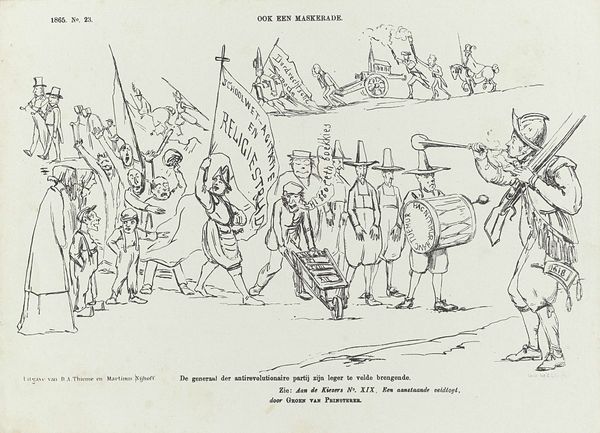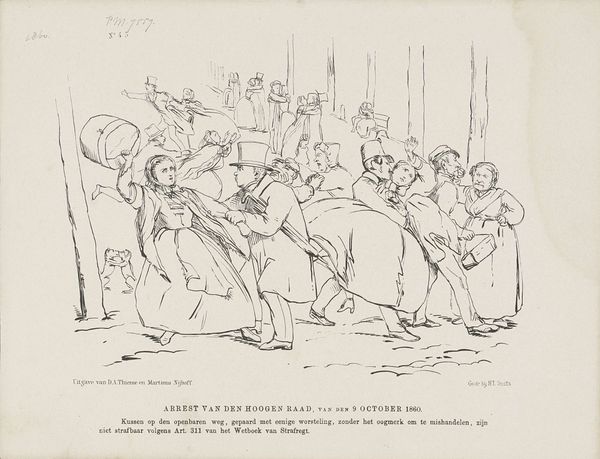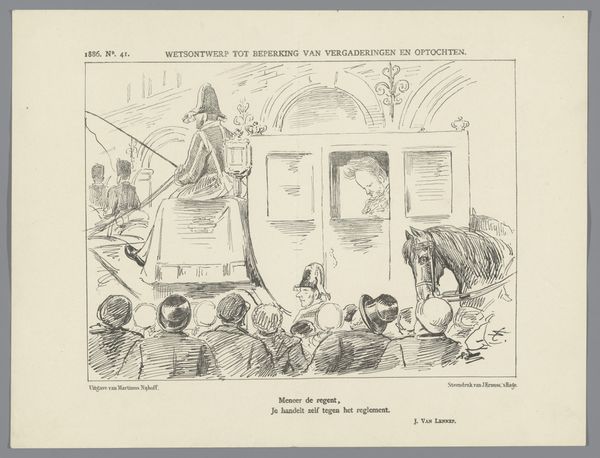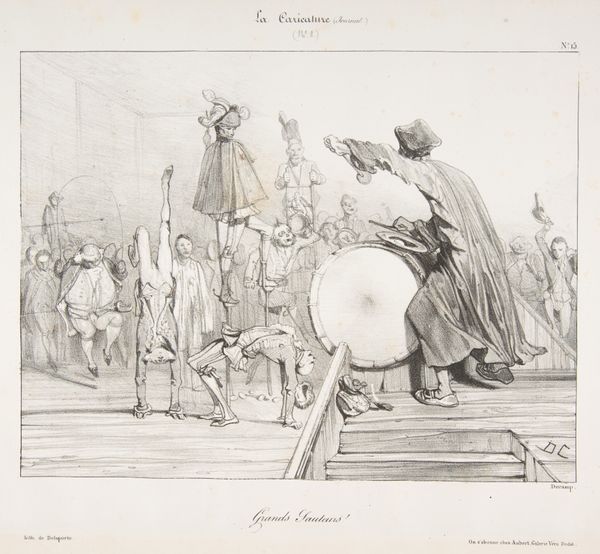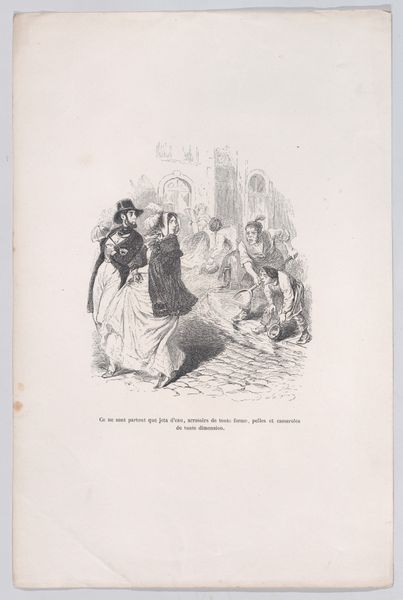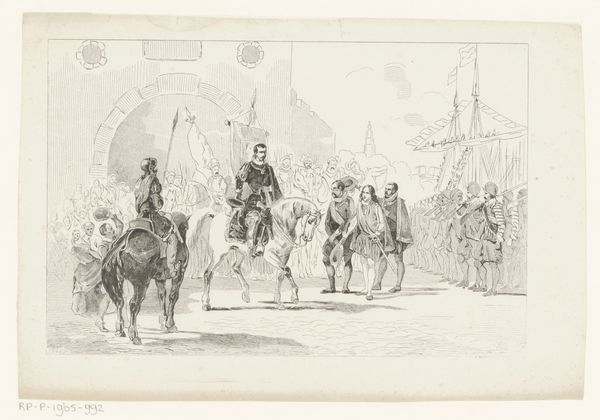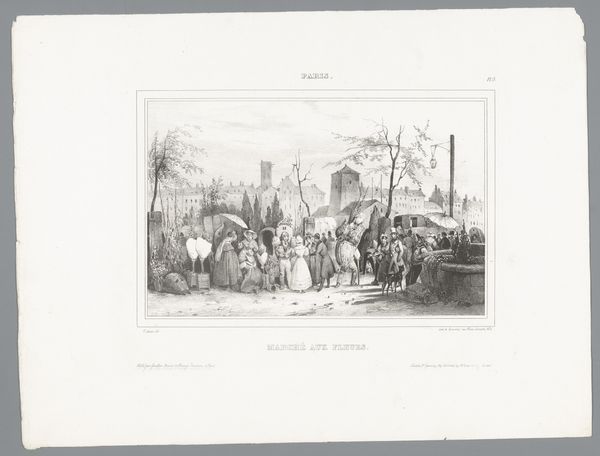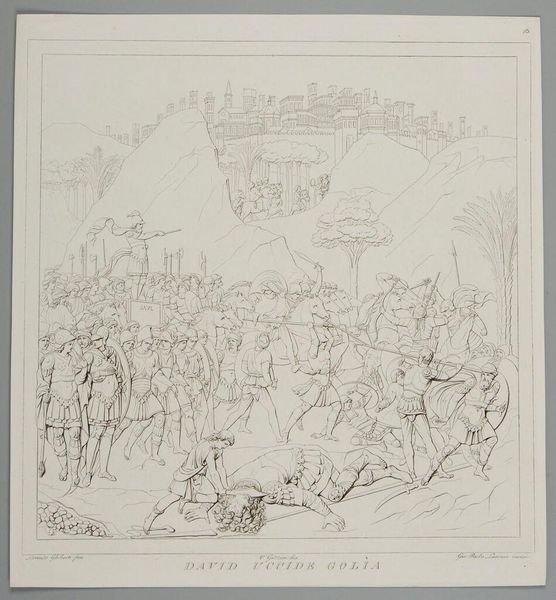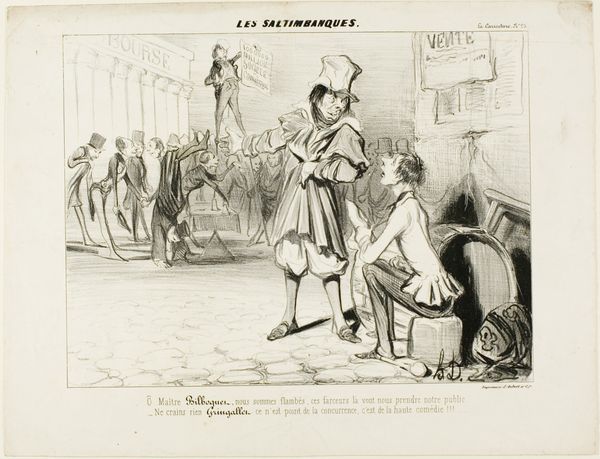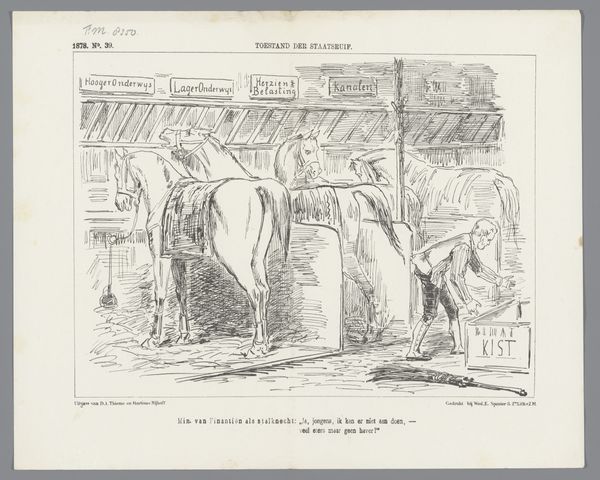
Spotprent op de invloed van jezuïeten in het Belgische parlement, 1864 1864
0:00
0:00
drawing, paper, ink
#
drawing
#
caricature
#
paper
#
ink
Dimensions: height 215 mm, width 275 mm
Copyright: Rijks Museum: Open Domain
Curator: This ink drawing from 1864 is titled "Spotprent op de invloed van jezuieten in het Belgische parlement," roughly translating to "Cartoon on the influence of Jesuits in the Belgian parliament." Editor: Oof, yes, I can feel the shade already. It's got this... bleatingly cynical vibe. The scratchy ink work just reinforces that feeling of political disquiet, wouldn't you say? Curator: Absolutely. You immediately notice the shepherd figure standing at what looks like the doorway to parliament, the sheep dutifully following him. The Vatican dome is visible in the background as well, further solidifying its meaning. It all looks… ominous. Editor: Right! The shepherd obviously represents the Jesuit influence, guiding—or rather, manipulating—the Belgian members of parliament, depicted as sheep. The dog seems to be helping. The closed nature of the building suggests restricted access, which underscores the backroom deals taking place that exclude some stakeholders. I wonder about the running dog! Curator: It might be the more independently-minded or those who see the influence coming. What intrigues me are the subtle visual cues—the dome representing the papacy, the sheep mentality equated with political compliance. Editor: So it’s about cultural anxieties as much as anything else, no? The cultural anxiety over the intrusion of a foreign, centralized authority of the Vatican onto the national political stage? Curator: Precisely. That visual vocabulary would resonate strongly with audiences of the time. There's a potent blend of religious commentary and political satire here, that transcends a straightforward denunciation. Editor: And that's the fascinating thing, isn't it? The artist's employing religious symbolism to criticize the very institution they stem from. By exaggerating these motifs, a mirror is being held up to those societal fears and inviting self-reflection... but likely mockery! Curator: It speaks volumes about the political and social landscape of Belgium in the mid-19th century—religious tensions, anxieties about centralized power. The issues still linger, even in vastly changed forms. Editor: True that! Even today, those bleating echoes of political theatre and questions about influence still have us looking, wondering about who the shepherds might be, and who, perhaps, are the sheep.
Comments
No comments
Be the first to comment and join the conversation on the ultimate creative platform.
